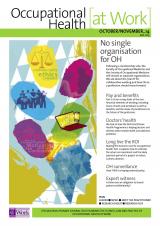October/November 2014 (vol. 11/3)
ContentsFeaturesNewsLegal
NewsResearch DigestResearch PlusCPD
Research Plus
Pushing and pulling
There is strong evidence, with consistent findings, that jobs involving pushing and pulling increase the risk of occupational shoulder symptoms, according to this systematic review. Two cross-sectional studies, one case–control study and four prospective cohort studies, together covering more than 8,000 participants, met inclusion criteria. There is moderate evidence – defined here as ‘consistent findings in at least two prospective cohort studies with low risk of bias and effect sizes in the same direction’ – that high exposure to occupational pushing and pulling are associated with neck/shoulder symptoms, but insufficient or conflicting evidence for a link with upper-arm, elbow, forearm, wrist or hand symptoms. Exposure levels were often defined in the included studies in terms of frequency of pushing/pulling tasks as well as load mass and duration.
Hoozemans MJM, Knelange EB et al. Are pushing and pulling work-related risk factors for upper extremity symptoms? A systematic review of observational studies. Occupational and Environmental Medicine 2014; online first: doi: 10.1136/oemed-2013-101837.
Occupational Health at Work October/November 2014 (vol. 11/3) pp44



